A new work to illustrate a changes in the evolution of the Alicante Trough located to the southeastern part of the sudiberian paleomargin and north to the supposed elevated sea floor forming a marine platform. Here the link to the work in Repository of the UA.
The Paleogene Alicante Trough of the South-Iberian Margin (External Betic Zone) consists of a narrow sedimentary basin that has active margins located to the north-northwest (active mainly during the Eocene) and to the south-southeast (active during the Oligocene). Both margins, consisting of shallow unstable platforms, were the source areas for the external-platform slope (in the opposite margins) and deep-basin (in the middle) depositional realms. The southern margin, lost under the Mediterranean Sea, is recognized only by the reconstructed Oligocene slope sediments.
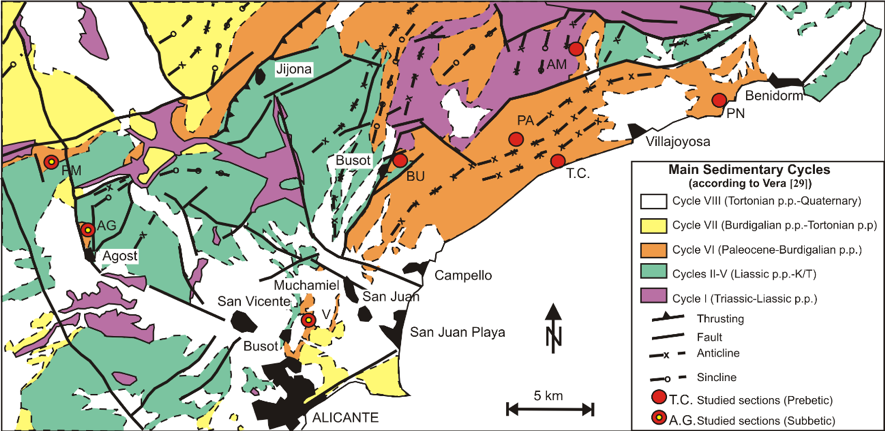
The eight successions studied, on opposites external-platform-slope margins and the deep within the central part of the basin, lead us to divide the basin into two depositional realms: the subsident Western Depositional Area (WDA) and the not subsident Eastern Depositional Area (EDA). This study has also enabled us to divide the infilling of the basin into two depositional sequences: Eocene p.p. (EDS) and Oligocene p.p. (ODS) in age, respectively, bound by two sequence boundaries (unconformities) at the Early Eocene (P6 zone) and Early Oligocene (P19 zone). The EDSand ODSare comprised of turbiditic and olisthostromic deposits and frequently slumps, evidencing an active tectonic in the margin-basin system.

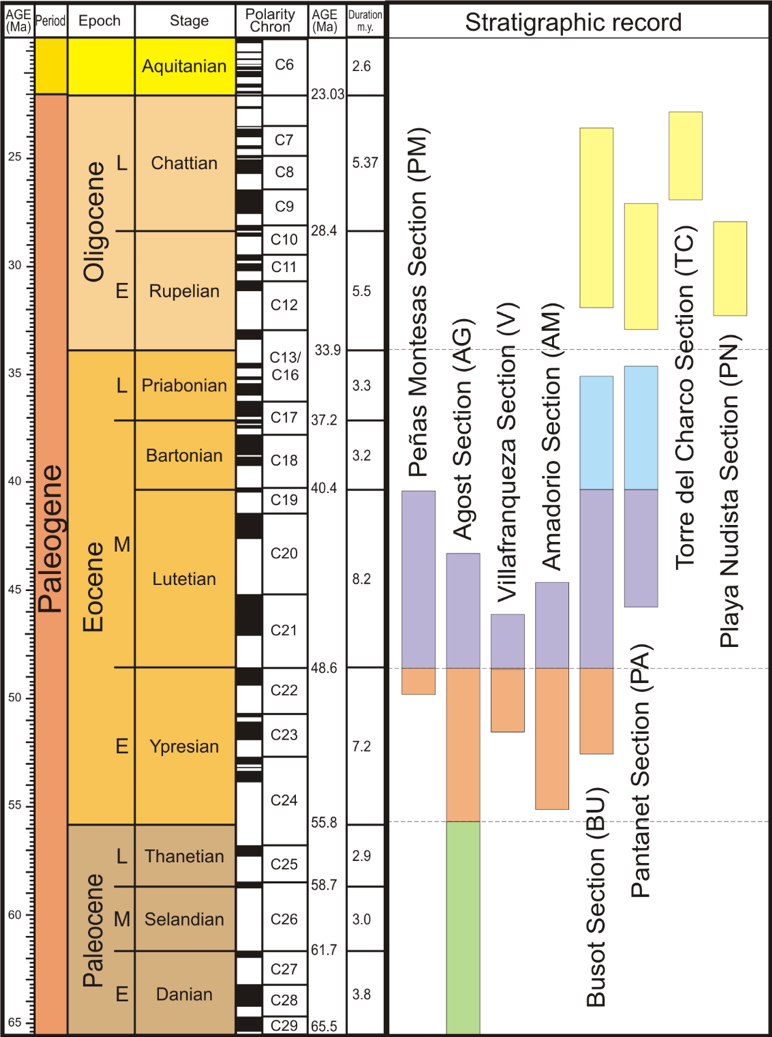
The correlation of the Paleogene sedimentary reconstructed in the Alicante Trough with other four synthetic successions throughout the External (three in the Subbetic Domain) and one in the Internal Betic Zone indicate a Paleogene generalised deformational framework.
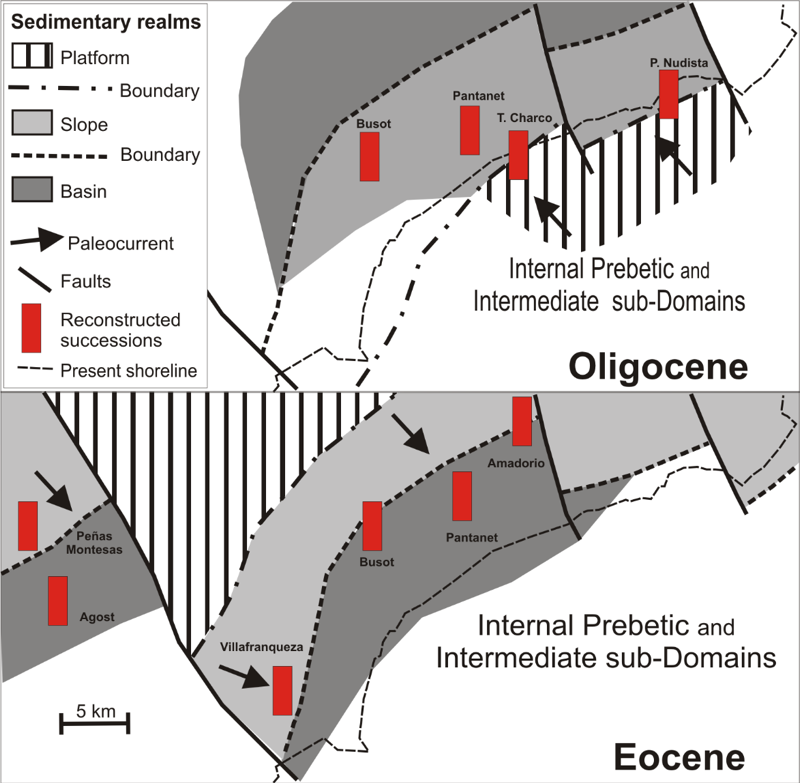
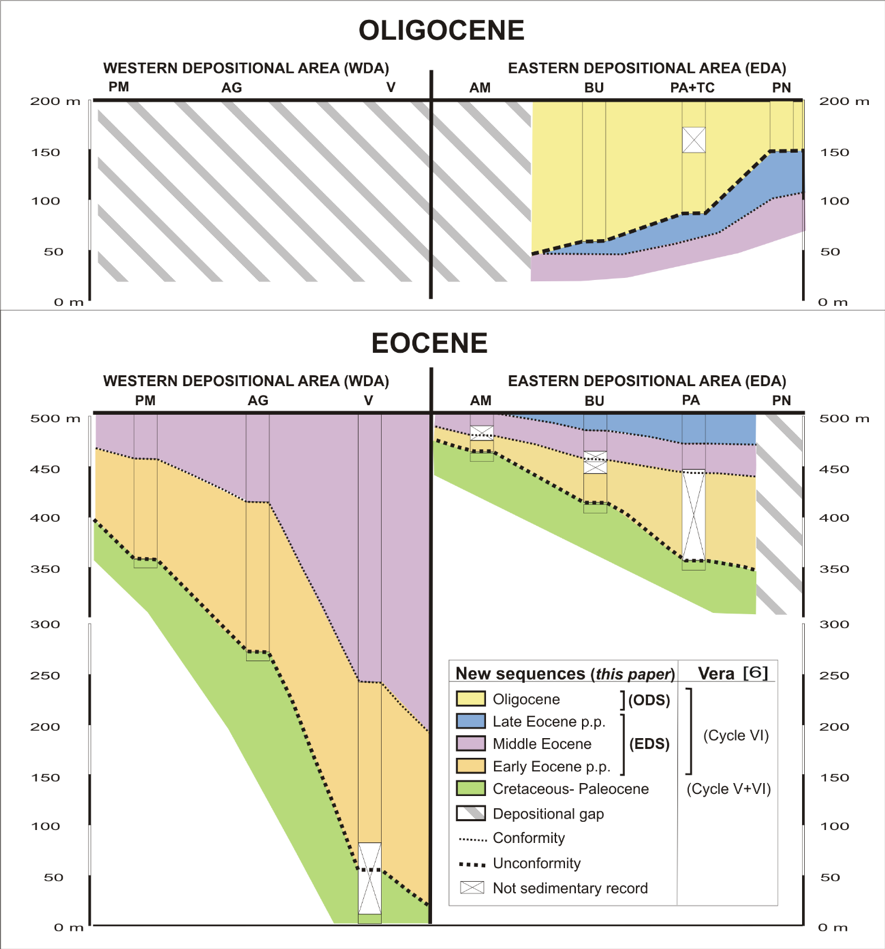
In addition, this evolution is contemporaneous to the Pyrenean, Iberian and the Nevado-Filabride Alpine deformation. The Paleogene tectonic recognised in the External Betic Zone is younger since the main orogenic deformation took place in the late Burdigalian to early Tortonian.
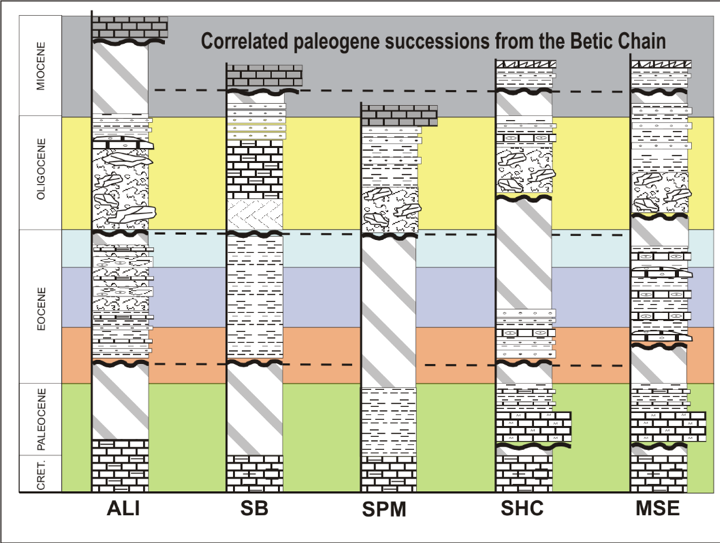
The origin of these early tectonics is discussed in relation to the Nevado-Filabride Alpine deformation.
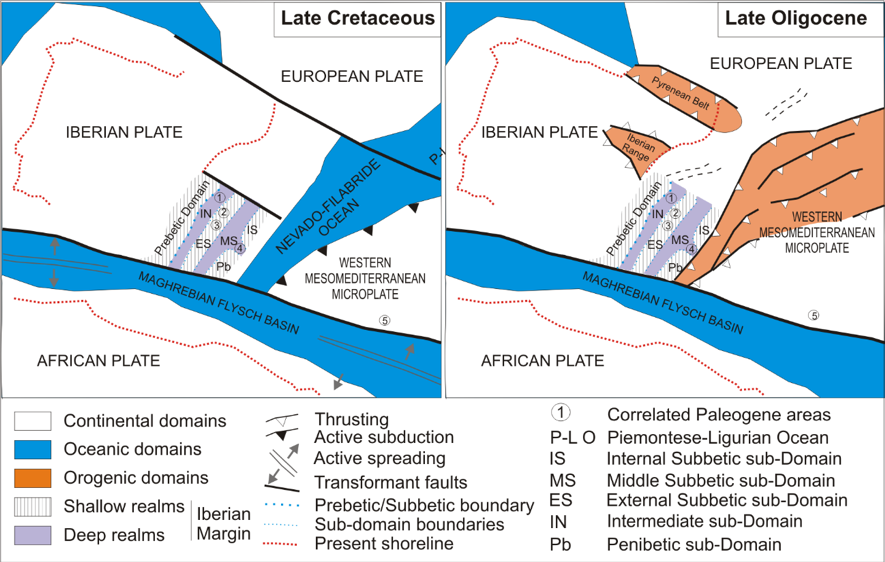
Recent Comments